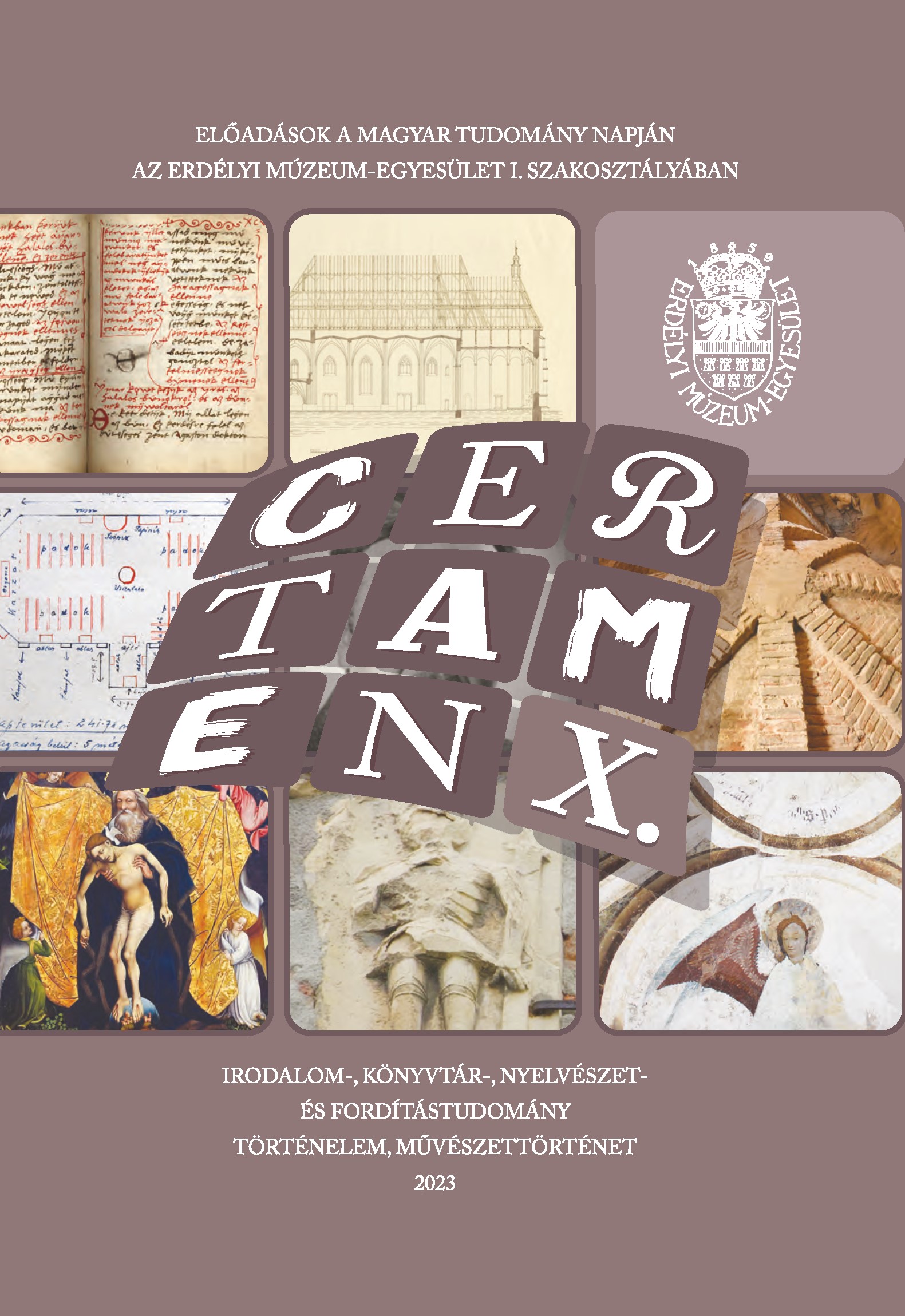A medgyesi ún. Mária-torony kápolnájának falképtriptichonja
The Wall Painting Triptych of the Chapel in the So-called “Tower of Mary” in Mediaș
Author(s): Anna KónyaSubject(s): History of Art
Published by: Erdélyi Múzeum-Egyesület
Keywords: Mediaș; medieval wall painting; fifteenth century; iconography; Holy Trinity; Virgin Mary; Saint John the Baptist
Summary/Abstract: This study focuses on a wall painting triptych painted in tromp l’oeil on the eastern wall of the chapel in the so-called “Tower of Mary” in Mediaș, once serving as the decoration of the medieval altar. In the central panel of the triptych, the figure of God the Father can be seen, holding the inert body of Christ in front of him by his chest, flanked by Saint John the Baptist on the right wing and a fragmentary figure on the left. After a brief presentation of the wall painting ensemble, in the first part of the paper I discuss the compositional characteristics and analogies of the Notgottes representation in the central panel. Dating the wall painting ensemble to the end of the fifteenth century, Dana Jenei traces the composition back to an engraving of the same theme by Master E.S. (Lehrs 186, c. 1450-1460). Proposing the two panels from the church of the Virgin Mary in Gdańsk representing the Notgottes as closer analogies, I argue that the composition in Mediaș was probably inspired by an earlier model than the engraving, which would also better correspond to a dating of the wall paintings to the mid-fifteenth century, suggested by the year 1465 carved into the painted surface under the left wing of the triptych. In the second part of the paper, based on an examination of surviving details and a consideration of compositional analogies, I revise previous hypothetical reconstructions of the fragmentary figure on the left wing of the triptych and aim to more precisely determine her probable iconography. While the suggestion formulated in earlier literature that the Virgin Mary had been depicted here is highly plausible, it is interesting to note that in two representations of the related theme of the Throne of Mercy, it is Mary holding the child Jesus who appears as a pendant to Saint John the Baptist with the Agnus Dei. The pairing of the Madonna with images of the Throne of Mercy and the Notgottes, as well as with the figure of Saint John the Baptist holding his Christological attribute, were in themselves also recurrent patterns in late medieval art. It is thus plausible that, in line with contemporary iconographic trends, in Mediaș, too, the figure of the Virgin Mary holding the child Christ was represented on the left wing of the illusionistic triptych, enriching the overall Christological significance of the composition.
Journal: Certamen
- Issue Year: 2023
- Issue No: X
- Page Range: 409-420
- Page Count: 12
- Language: Hungarian

